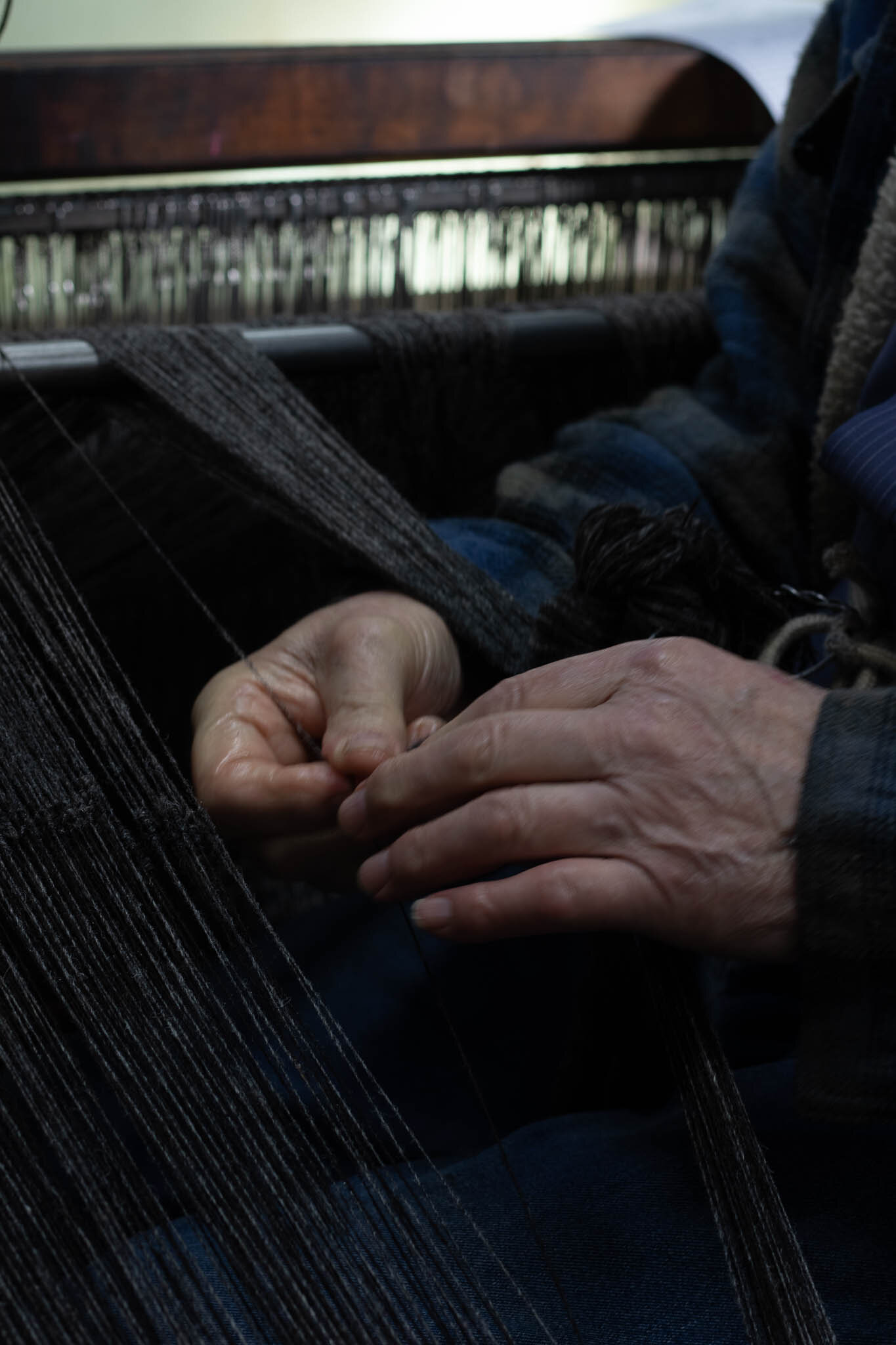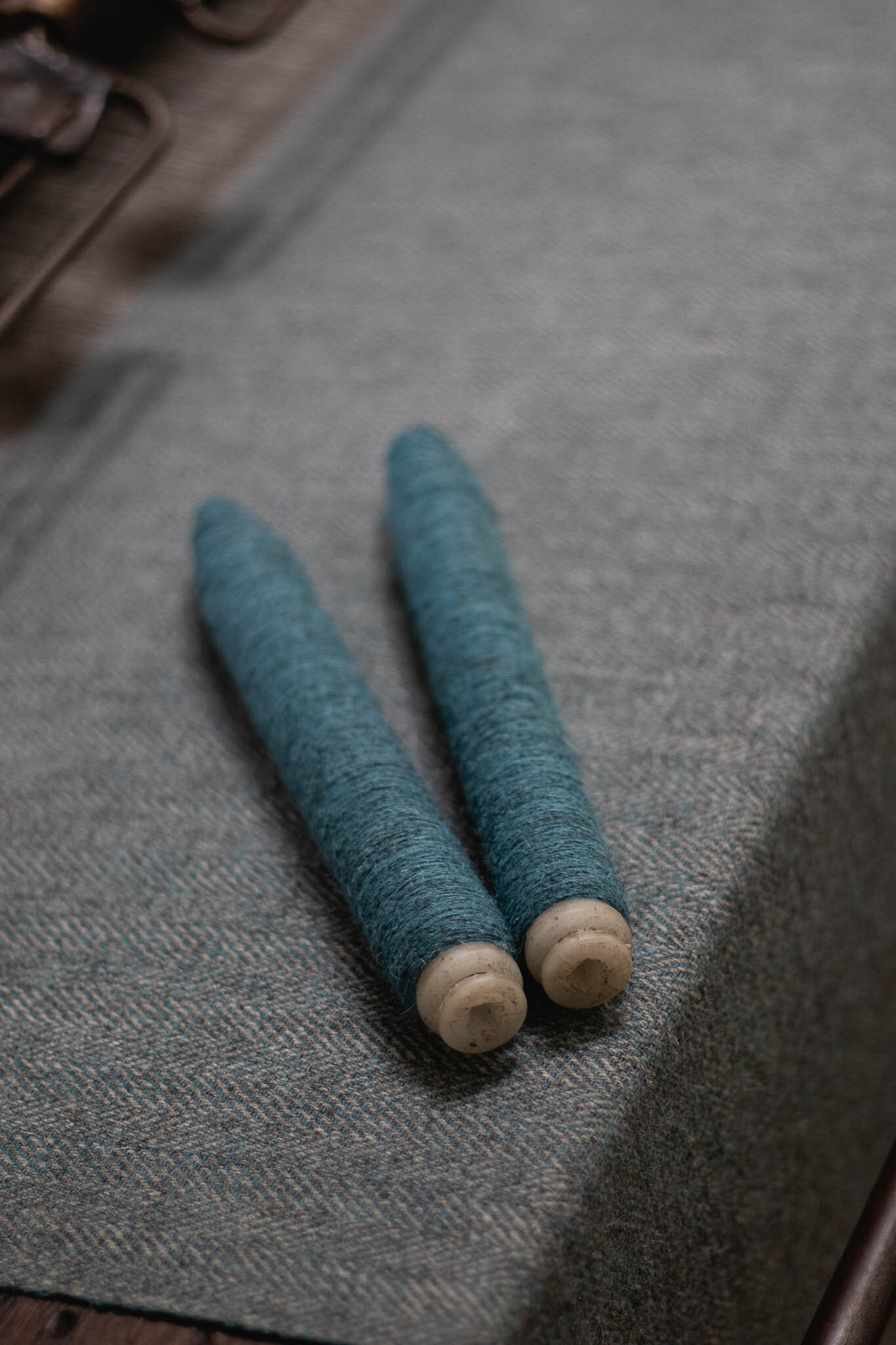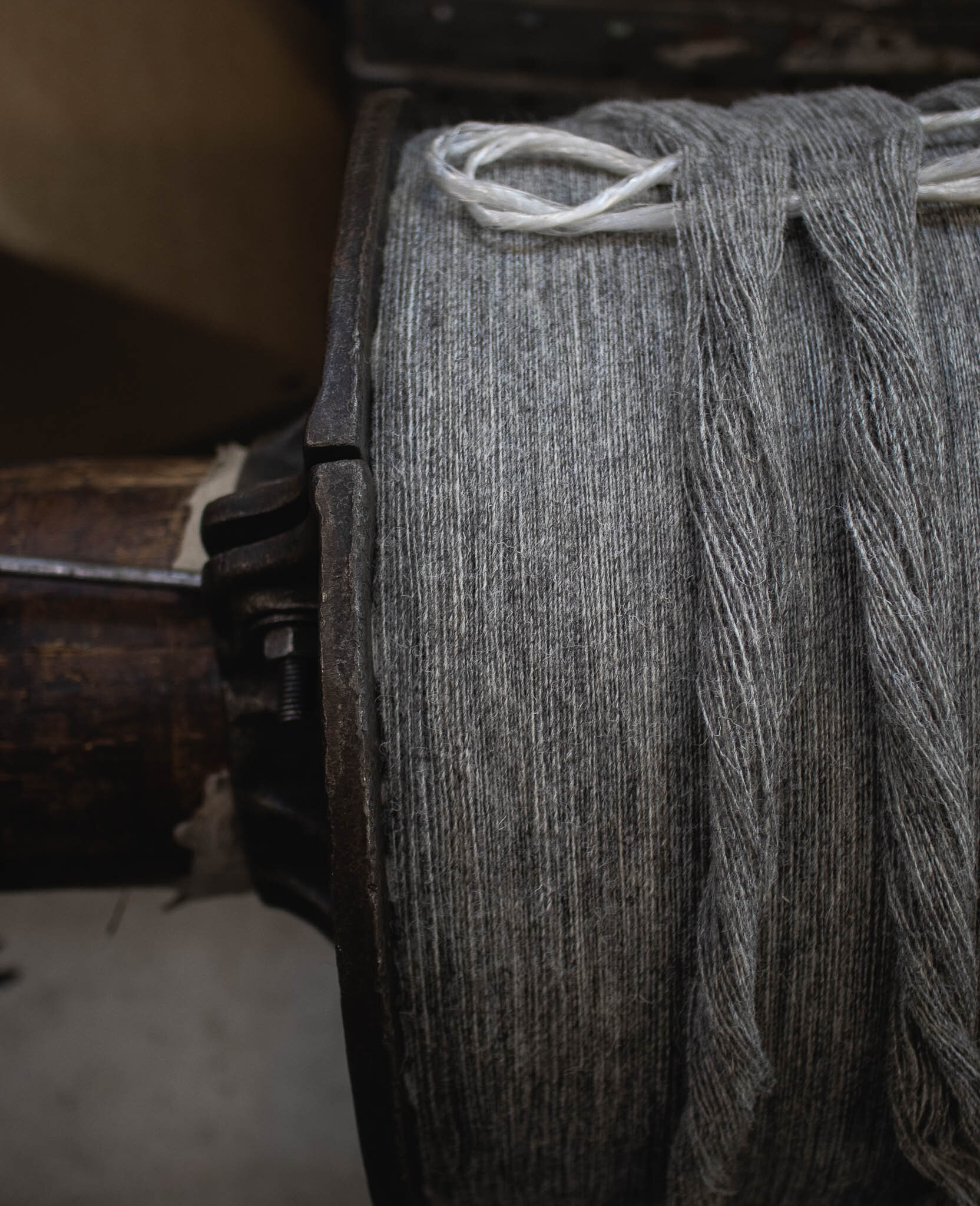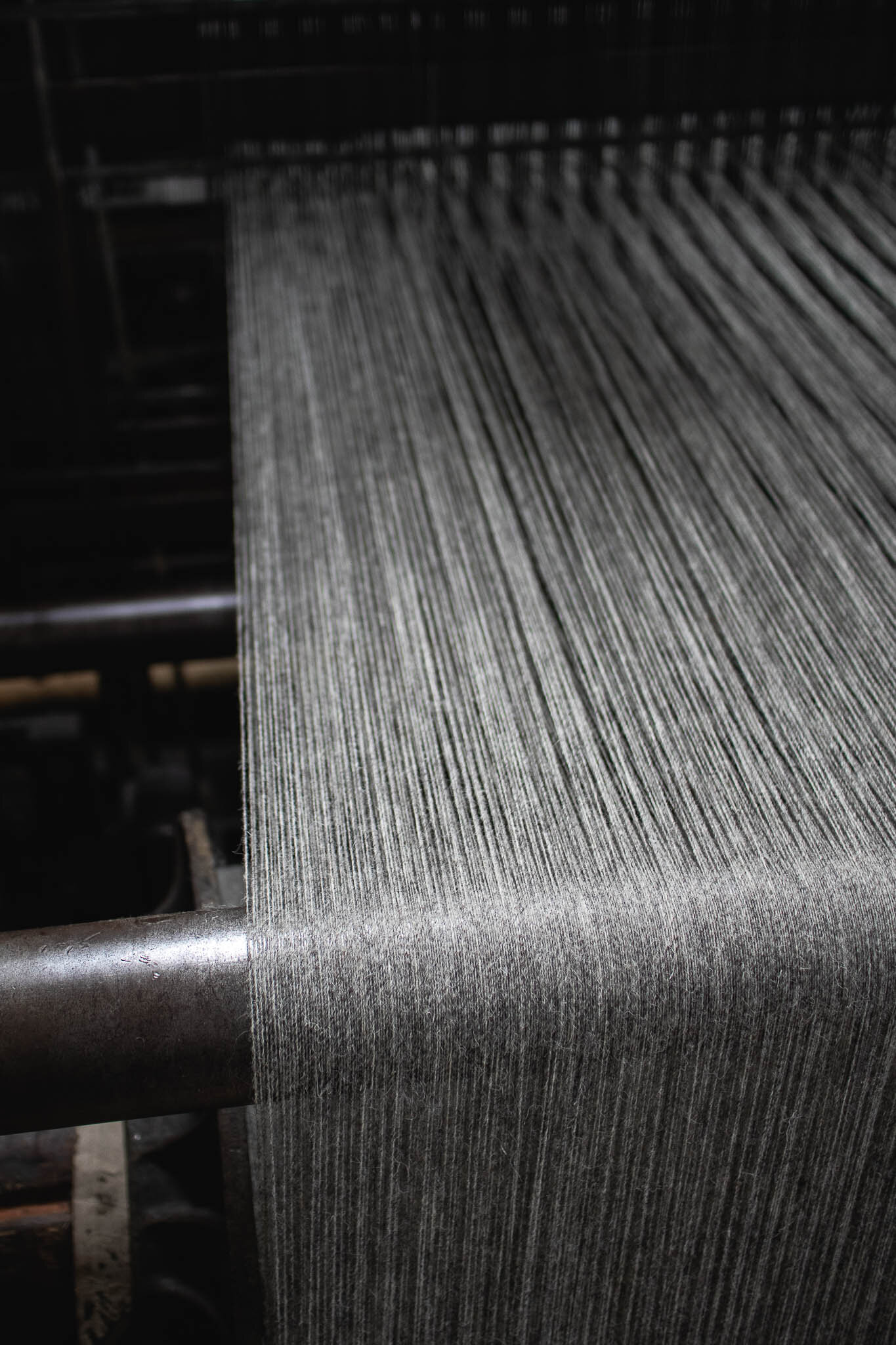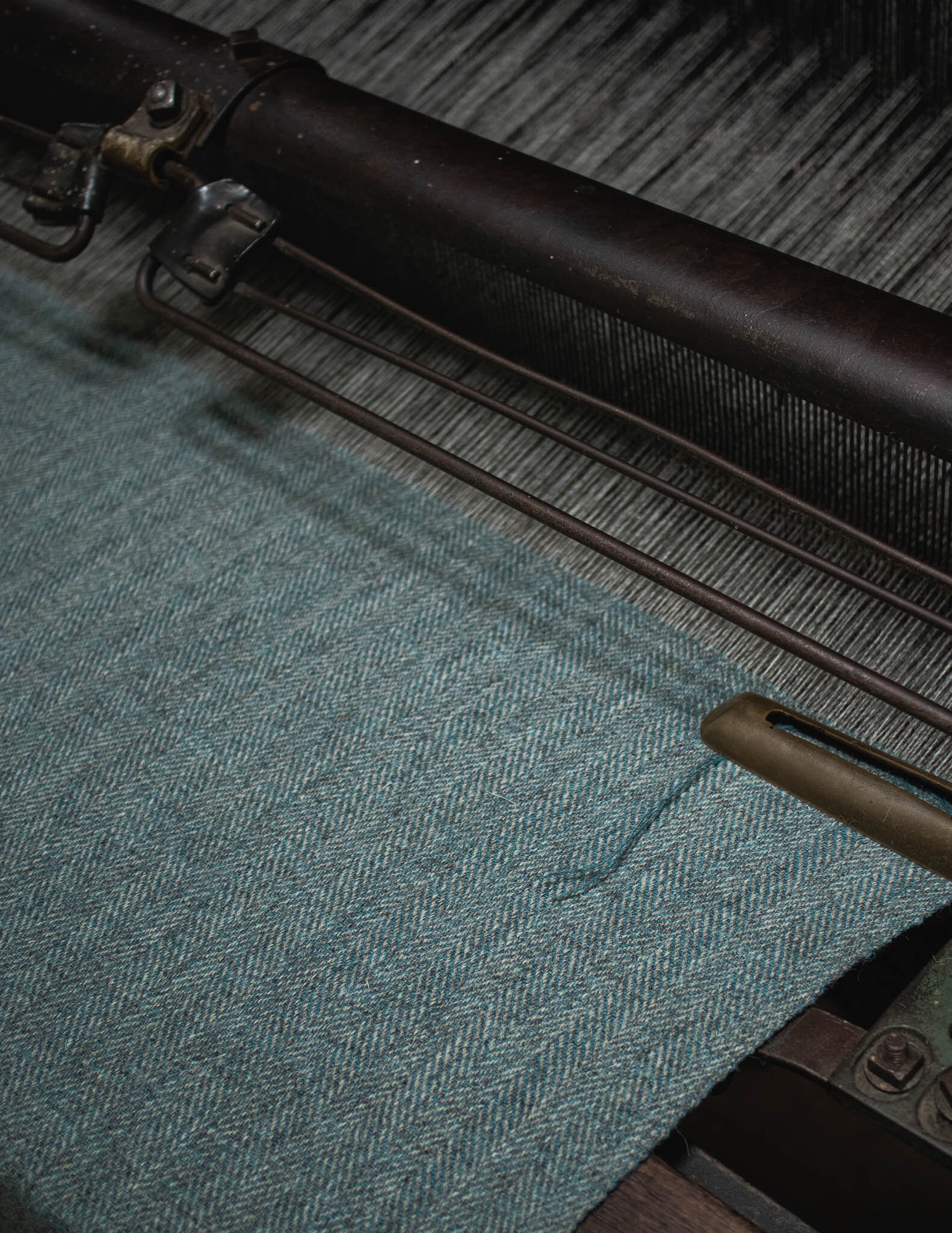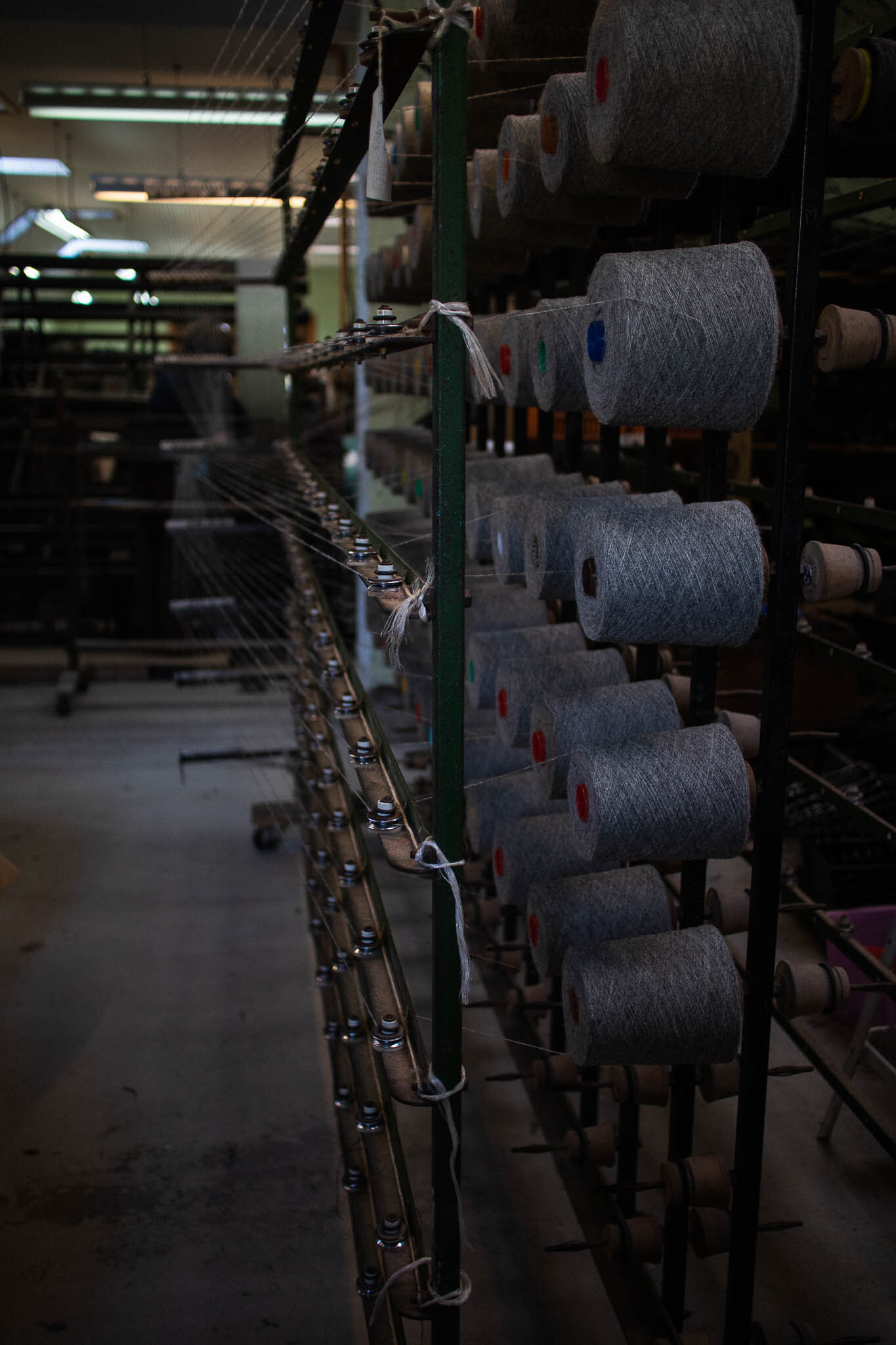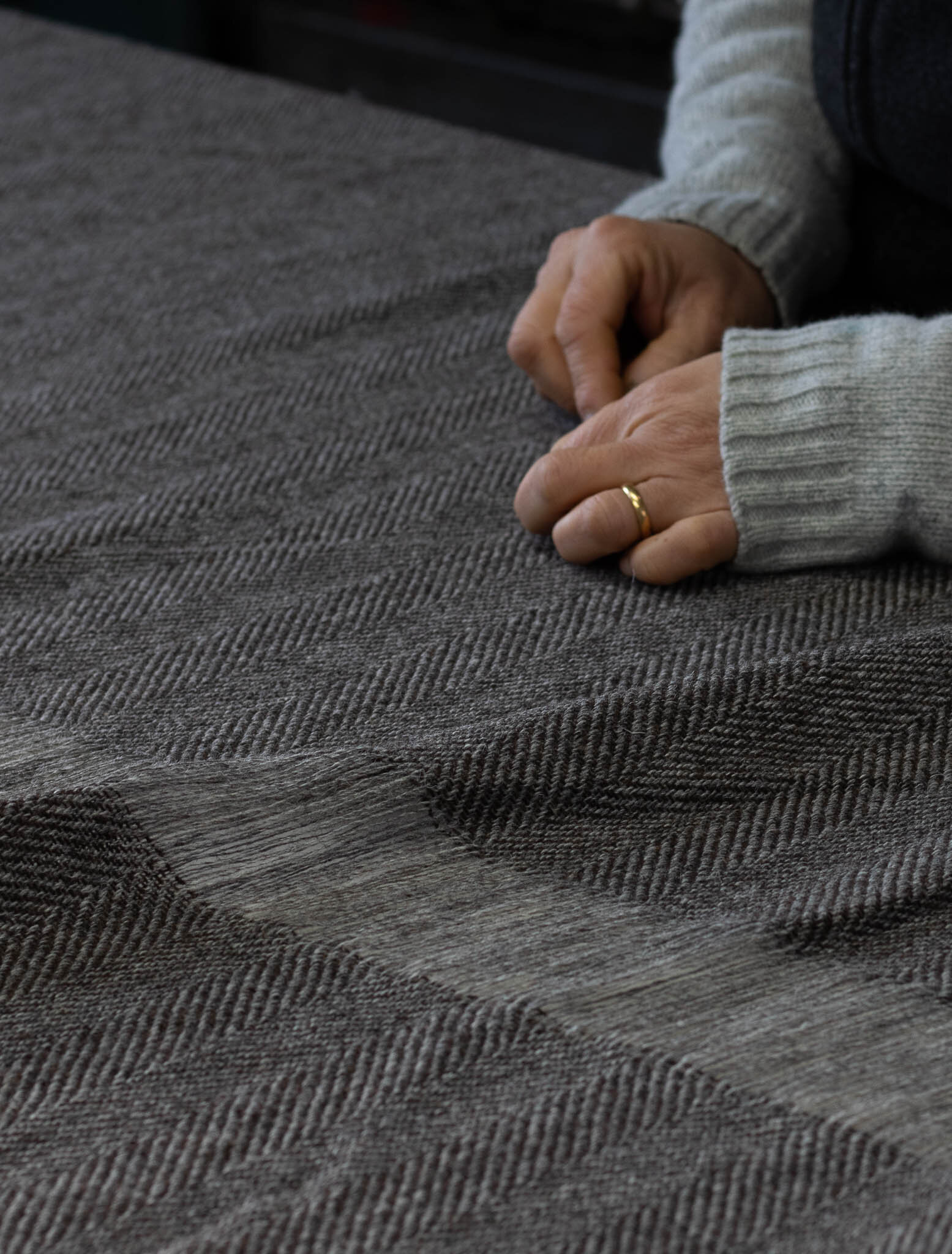Ardalanish Mill
Eight miles from Iona as the crow flies, or one ferry ride and a windy drive along a single track road, in an unassuming converted cowshed sits the tiny wind powered artisan weaving mill, Ardalanish. Our wool arrives here as single ply weaving yarn and comes out as tweed, in a process that takes approximately a week from cone to cloth.
Ardalanish is such a special place that we never turn down an invite to visit whenever they are weaving our tweed. It’s fascinating to learn about the process and see the painstaking work and skill that goes into creating such an artisan cloth.
Ardalanish has two Dobcross looms which can weave at a speed of 4 metres an hour if things are going well and the loom is behaving. The looms were made in the 1950s and were made, pretty much to the same design with a couple of modificatiions between the 1860s to the 1960s in the village of Dobcross in Yorkshire. They were the thundering cast iron workhorses of the industrial revolution and the big textile mills used to have hundreds all clattering away at once, mostly powered by water that was flooded into the mill yards overnight.
There are only a handful of working Dobcross looms left in the UK now, with even fewer weavers and mechanics that know how to operate and maintain them. Watching these elegant workhorses run, puts you firmly in touch with the volume of work and care that goes in to creating quality cloth. While modern looms definitely have their place, witnessing the process of sheep fleece to cloth between Iona and Ardalanish gives you a real understanding of what’s involved, and, in a current climate of fast, excessive textile production and the waste and exploitative labour that goes along with it, Iona Tweed stands for something different.
Not only are the Dobcross looms incredible feats of human ingenuity and an important part of our textile heritage, but they weave a superior cloth that has never been equalled by modern machines. These looms use shuttles to weave the horizontal thread into the cloth, which is called the ‘weft’ by holding the shuttles filled with bobbins or ‘pirns’ in boxes each side of the cloth, firing one across with a ‘pickstick’ each time the shed changes, that is, each time the threads move up or down.
The use of shuttles means the cloth has a selvedge, a bound edge, which is a sought after feature of fabric by tailors. In fact, a kilt cannot be made with fabric that does not have a selvedge, and in the world of tweed and woollen cloth this is becoming rarer and rarer. Modern looms are ‘rapier’ looms, that is, they don’t send the weft across in a shuttle but instead have a sort of hook that reaches across the fabric, pulls the thread through and then a razor cuts it at the edge. These looms are fast and enable a step in the process to be skipped due to the fact that bobbins, or pirns, do not have to be wound. Modern looms also have the advantage that they do not require one weaver per loom, no shuttles mean no need to change bobbins when they run out, and often one weaver oversees many looms at one time. This obviously means fabric can be made faster and therefore cheaper and, though that is great for everyday fabric, some might say - what you gain in speed, you sacrifice in quality.
Our yarn enters the mill and goes through a series of processes, warping, beaming off, tying in, bobbin winding, weaving and mending before it is sent off to the finishers. Here the fabric is expertly washed and fixed with steam, ensuring a uniform, robust cloth that keeps a crisp line and does not sag at the knees or elbows when sewn into a garment. They straighten the edges with tenterhooks and skim the surface with a sharp razor which results in a refined, smooth tweed that hangs with an elegant drape. These processes are, in order: scour, tenter, crop, decate.


